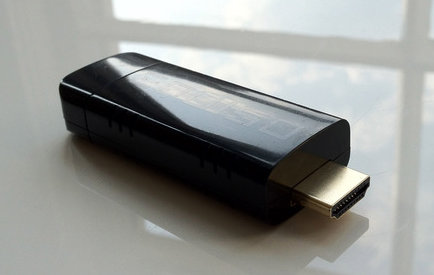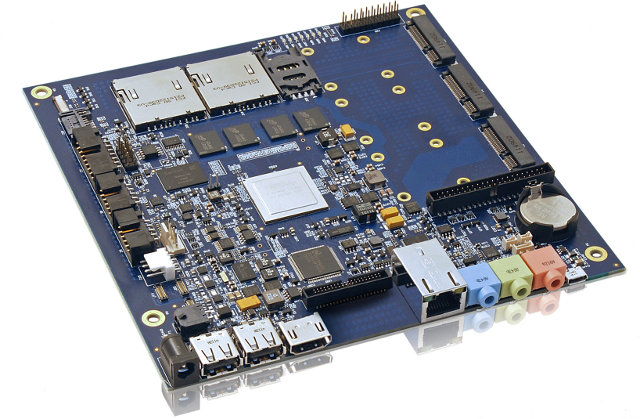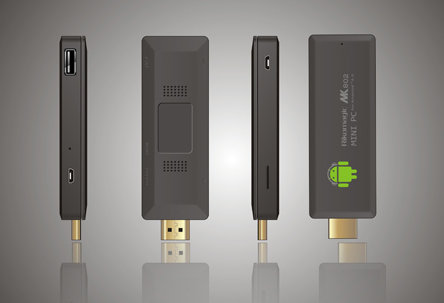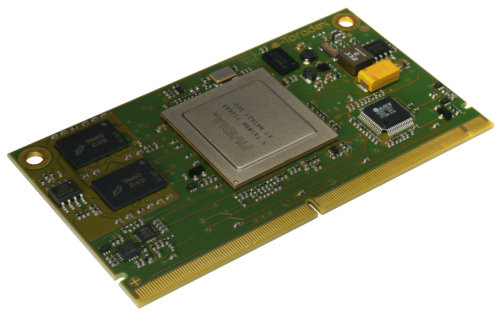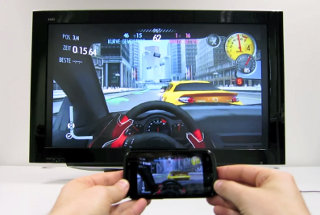Here’s yet another Android mini PC HDMI Stick. Equiso has started a KickStarter compaign to raise funds to complete development and manufacture the Equiso Smart TV, an Android mini PC based on Telechips TCC8925 Cortex A5 processor. It looks very similar to CX-01 mini PC with Android 4.0 running on a TCC8925 processor, 512 MB RAM and the lack of a microSD card slot. The only hardware differences are that it includes 8GB internal storage (vs 4GB for CX-01), and it features an HDMI 1.4 port (vs 1.3 for others). Here are the specs of the device: Telechips TCC8925 Arm Cortex A5 Processor @ 1GHz + Mali 400 3D Graphics Processor 512 MB DDR3 RAM 802.11 N wireless radio 8 GB Memory Internal (WiFi) 1.4 HDMI Plug n’ Play Interface, 3D, ESD protection, CEC USB 2.0 port microUSB 2.0 port to power the device Dimensions – 80mm x 30mm x […]
Quick Binary Debugging in Linux with Strace System Call Tracer
I’ve recently come across strace, a debugging utility for Linux that “monitor the system calls used by a program and all the signals”. It may not be that useful if you have the source code and can run other debugging tools such as gdb, or simply add printf to your code. But if you don’t have source code of the program, or you are a system administrator who wants to check if the program fails due to file access reasons, for example, this is really a great tool as it may help you find out which file causes problem. In my case, I was trying OpenGL ES on an ARM platform, and at least part of the code comes in libraries that are only available in binary form. I got the following error message running es2_info (part of mesa-utils-extra): UMP: ump_arch_open() failed to open UMP device driver ********************************************************************* ERROR: In […]
Kontron Unveils KTT30/mITX Nvidia Tegra 3 Mini-ITX Board
Kontron has today unveiled the KTT30/mITX, its first embedded ARM based Mini-ITX board (and the first ARM mini-ITX board I’ve ever heard of). The motherboard is powered by Nvidia Tegra 3 quad core processor @ 900 MHz with up to 2 GB DDR3L memory, and consumes less than 7W. Storage is available via 2 SD Card slots, one bootable eMMC, and one SATA 2.0 port. The company expects this ARM Mini-ITX motherboard to be used in applications such as thin clients, Panel PCs, digital signage and Mini-Box PCs. The solution is also suitable for industrial (rail road, instrumentation…) and medical fields as it will be available for at least seven years. By using the Mini-ITX form factor, Kontron KTT30/mITX board can be easily integrated in existing embedded solutions using (x86) mini-ITX boards. Here are the key features of Kontron KTT30/mITX motherboard: SoC – Nvidia Tegra 3 ARM Cortex-A9 Quad Core […]
Rikomagic MK802 II Mini PC Will Be Available in September
Rikomagic announced that they are working on two new versions of the MK802 Android mini PC. The first version (MK802 II) will be based on basically the same hardware (AllWinner A10 SoC), but with a different casing, an HDMI male connector, and 3 USB connectors (2 microUSB and 1 standard USB). They will apparently add some holes to the casing for better ventilation in order to decrease excessive heat. The company also mentioned they are working on a version with a dual core processor without giving further details. If we want to play guessing games, it could be next generation AllWinner dual core Cortex A9 processor (codenamed sun6i), or a low cost dual core Cortex A5 processor such as TCC8925. Source: Rikomagic Forums
Toradex Releases Apalis Computer on Module Architecture Specification
Last month, Toradex released the preliminary specification for Apalis, a Computer on Module (CoM) architecture. Although the Apalis specification has been initially designed with ARM based processors in mind such as the Nvidia Tegra, Freescale i.MX and Texas Instruments OMAP processor families, it aims at being device and chip architecture independent. The Apallis specification defines the following: Interface Specifications: Signal Naming Convention – Rules to name pins (e.g. VCC, PWM1, PWM2, ) which are used for all modules. Signal Definition – Details about the pins named above Physical Pin Definition and Location Mechanical Specifications: Mounting and Fixation Module Size – Standard: 82 x 45mm | Extended: 82 x 56mm Pin Numbering – There is a total of 321 pin numbers (but a few less actually pins) Electrical Specifications: Power Supplies Power Control Back Feed Protection This specifications also defines mounting mechanisms for active cooling (e.g. heat spreaders) in case those […]
Amahi 6.1 for Ubuntu 12.04 Released
Amahi has just announced the release of Amahi 6.1, Ubuntu Edition, an Home Digital Assistant (HDA). Amahi used to only work for Fedora and this is their very first stable release for Ubuntu 12.04. The key features of Amahi 6.1, Ubuntu Edition include: Greyhole 0.9 (storage pooling technology) Reliability fixes and updates New look Support for 32 / 64-bit Desktop and Server versions of Ubuntu Improved cloud storage with Amahi Sync Preliminary support ARM platforms such as PandaBoard and BeagleBoard One-Click App installs via Amahi’s application store If you want to get started with Amahi, you’ll have to register (and get an install code), and follow a few command line instructions. The instructions are the same to install on ARM platforms (assuming you already have Ubuntu 12.04 running), but Amahi developers recommend to install it to an hard drive instead of an SD card for performance reasons. They are also […]
Android Transporter Enables WiFi Display Mirroring (similar to Miracast) of Android Devices
E.S.R.Labs is a German embedded software company mainly working for the automotive industry. But this time, they’ve started to work for the consumer market with Android Transformer, a software solution that can mirror an Android display to another Android device display via Wi-Fi in a similar fashion to what WiFi Miracast will do. Eventually, the company plan to make Android Transporter compatible with Wi-Fi Miracast, but in the meantime they rolled out their own solution by taking advantage of H.264 hardware encoders and decoders on Galaxy Nexus S and the Raspberry Pi. If they use standard APIs, I assume any hardware running Android that with H.264 hardware encode/decode should support their platform. I hope it will be work on (or be ported to) CX-01 mini PC which can be bought as low as $40 inc. shipping. It would make an even cheaper hardware than the Raspberry Pi (Up to 33% […]
Mozilla Renames Boot 2 Gecko to Firefox OS and Partners with ZTE & TCL
Mozilla announced it would rename its Boot 2 Gecko (B2G) HTML5 mobile operating system to Firefox OS, and that ZTE and TCL (under the Alcatel brand) would manufacture the first devices running Firefox OS using Qualcomm Snapdragon Processors. The first devices should be available early 2013, at first in Brazil through Vivo, Telefónica’s commercial brand. The company also said that telecom operators such as Deutsche Telekom, Etisalat, Smart, Sprint, Telecom Italia, Telefónica and Telenor are planning to sell Firefox OS based smartphones. The platform is said to be optimized for entry-level smartphones thanks to the removal of unnecessary middleware layers among other things. This should allow mobile operators to provide low-cost handsets with “richer experiences” for the developing markets. Firefox OS will be fully open source and the reference implementation of the required Web APIs is being submitted to W3C for standardization. Internally, the project still appears to be referred to […]


